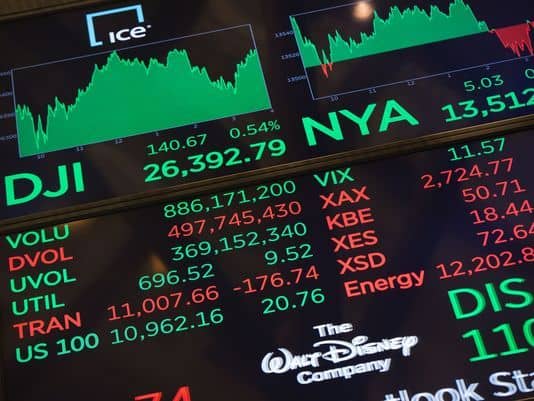
After a 25% surge last year, the Dow Jones industrial average is still on a tear, shooting up nearly 6% in January alone. And once-wary Main Street investors who sat out most of the bull market are now buying stocks in pursuit of profits.
These are some of the tell-tale signs of a stock market that may be getting exuberant. And that’s why some Wall Street pros say the market is entering a “melt-up” phase, a scenario that could affect your 401(k) account balance.
A melt-up often comes with negative connotations. History has shown that stock markets that go straight up are at higher risk of doing an about-face, and going down fast when the euphoria ends.
Melt-ups in the late 1920s and 1990s were followed by years of bear markets with massive price drops of 86% and 49%, respectively, for the Standard & Poor’s 500 stock index.
“There is concern because if a melt-up is underway, that might increase the odds of a meltdown,” says Ed Yardeni, chief investment strategist at Yardeni Research.
On the flip side, these steep climbs can go on longer than many believe possible, and make investors lots of money.
In 1999, for example, the Nasdaq soared nearly 86% as the internet-stock mania crested, before rising 24% more in early 2000 and peaking that March. Similarly, after Fed chairman Alan Greenspan warned of “irrational exuberance” in December 1996, the broader U.S. market kept rising for more than three years.
While there’s no precise definition of a melt-up, each has common characteristics.
“They occur when investors are chasing a market uptrend in fear of missing out on gains,” says Gina Martin Adams, chief equity strategist at Bloomberg Intelligence. “The buying results in elevated stock prices even though the gains are not supported by any real improvement in business conditions.”
The Dow, which cratered 540 points on Monday and Tuesday, endured a day of wild swing on Wednesday but closed up 73 points.
Wall Street pros are split on whether stocks have entered the “melt-up” phase or whether the price action is normal.
Yardeni says there are enough signs to confirm a melt-up.”Stock prices,” he says, “are boiling hot.”
He notes that today’s round of fast-rising stock prices has been driven by legitimate factors, such as the sharp increases in profit forecasts for U.S. companies following the passage of big corporate tax cuts in December.
Analysts have raised projections for 2018 profit growth at big companies to 17.2%, up from 12% on Jan. 1, according to earnings-tracking Thomson Reuters.
“It’s very unusual to see an earnings-led melt-up,” Yardeni says.
This type of melt-up, at least in the short term, is less risky because buying is rational rather than irrational. Beside earnings, investors are impressed by a global economic recovery that fueling demand for goods and services.
At some point, too much of a good thing ends up being the market’s enemy, Yardeni adds.
If the tax cuts result in an economy that grows too quickly, inflation could spike and force the Federal Reserve to hike interest rates faster than investors expect. Higher borrowing costs typically cause economic growth to slow and make it harder for individuals and businesses to manage debt. Fears of a rate-hike spike were cited by Wall Street analysts this week as a reason for the Dow’s steep drop.
Other investment pros say it’s too early to say we’re in a melt-up.
Chris Verrone, a partner at Strategas Research Partners in New York, says a few things are missing.
The size of the market gain in the past six months isn’t big enough to qualify under his firm’s their grading system. Also missing from the rally is “widespread participation” from retail investors. Even though global cash inflows to stocks last week hit a record $33.2 billion, following back-to-back weeks of roughly $24 billion, according to Bank of America Lynch, it’s too small a sample size to make up for a decade of mutual fund outflows after the 2008 financial crisis, Verrone says.
The roughly 100% gain in the market over the past five years is much smaller than the gain of nearly 200% from 1995 to 2000, Bloomberg Intelligence data show.
The takeaway: “Melt-ups,” says Adams, “can go on for a while.”
